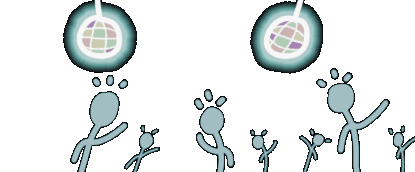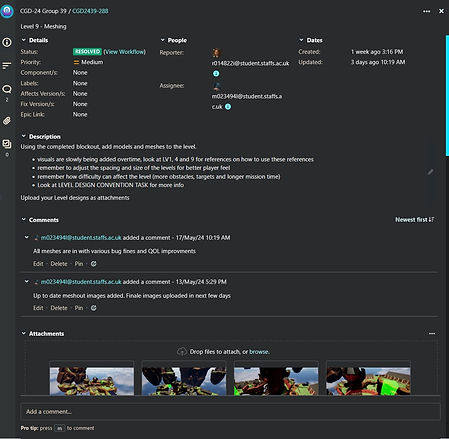When Pigs Fly
When Pigs Fly is a team project and a unofficial sequel to Toro, featuring 11 open ended levels filled with action packed parkour and enchanting visuals. I acted as the project lead leading a team of 20 through a span of 6 weeks to make a refined parkour game from scratch.
Project length = 6 weeks
Behind The Scenes
To start off the project the team was tasked with pre-production, gathering gameplay and visual references for to set design and art disciplines on the right track whilst I put together moodboards for both, lists for mechanics and visuals for more concise planning and mockups for UI to put the large tech team to use.
Miro Board

Reference Moodboards
Moodboards were put together in photoshop for a consistent format that would look more professional and simpler for juniors, as well as standing out more for portfolio websites. At this time it also helps to separate the 2 projects that were currently on going before choosing When Pigs Fly as the main project.
Mechanic Diagrams
Mechanic diagrams were also done in the same standard with the workflow used throughout all project before, with a rough pencil brush for drawing and notes, but clear text for annotations. As I was the project lead, I was the one who did nearly all the diagrams and moodboard collections for gameplay and visual references to better show the team what my idea was.
The diagrams covered some of the basics such as movement and character mechanics/camera, as well as how the design team would work together to create consistent levels with conventions. Other elements such as the tutorial level were also followed to create a interactive tutorial for players which is more effective then text based tutorials where players can easily forget written information. This is a direct continuation of the tutorial idea I had in mind for MechHead which I brought to life in this project instead.
Overall these diagrams were extremely useful for the tech team and lead to a quick prototype of the character and his gameplay loop. Conventions as well were also followed by designers which only led to minor tweaking before the 1.0 release.

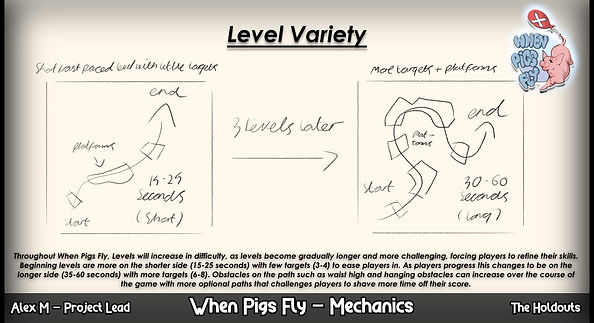
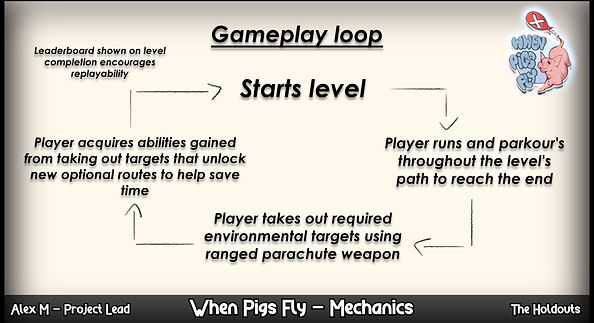




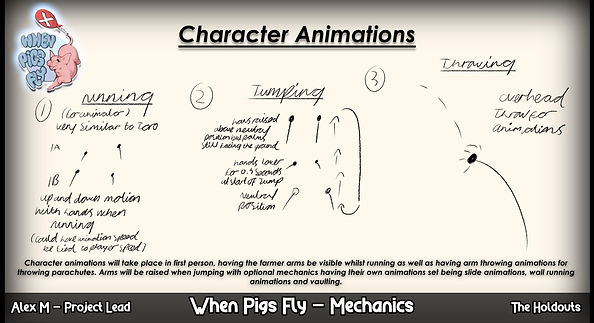
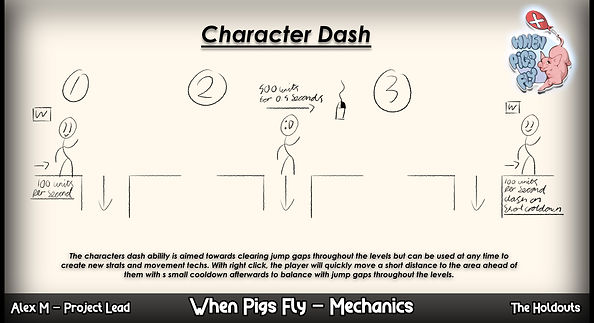


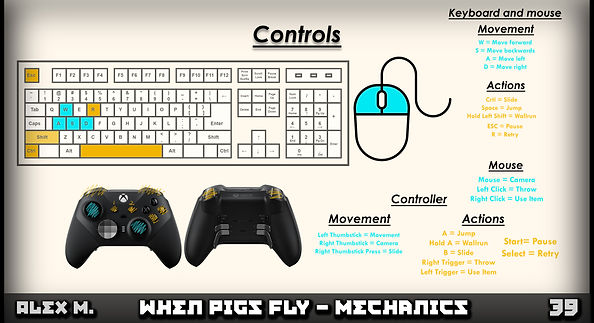
Level Designs
Level 1 would be a fairly simple level presented after the tutorial, with simple paths and obstacles, alongside a large amount of targets with a low minimum amount hit. This is so the player can run through the level a few times to gully get the grip of the game whilst being forgiving with the target system. Optional paths are also shown which offer more targets and mechanics which most players took during playtesting. Later additions such as signs, visuals and cloud particle systems helped to guide the player and emphasize the setting of the world.
Level 4 is in the same vein, apart from slighter larger jump gaps, as well as closer target placement, especially in later portions that keeps the player more on their toes and challenges better aiming. The usage of curves and bends removes sightlines towards the end goal unlike Level 1, which can trick the player into thinking the level is longer, or simply removes guidance, forcing the player to be more self-independent as the game progresses. The minimum targets have been raised and more walrus offer interesting strats that the player can create to get more speed and quicker times.
Level 9 takes a different approach by having a visual be the main set piece unlike the last 2. The silo grain acts as the main player interest and a goal to get too, whilst challenging the player on all they have learnt throughout each level, with higher minimums, more mechanics, and closer gaps between challenges.
The only aspect that didn’t make it to the final build was the ability to jump up to larger elevations through pickups dropped by pigs. This was actually added in the final days of the projects, but due to the unpredictability of the pickup, as well as lack of QA on these optional routes, this was sent to the cutting floor to make the rest of the levels a more refined experience. This turned out to be a better approach in the end as most players had a better sense of direction and goal which meant they had a lot more fun due to simplicity.
Level 1

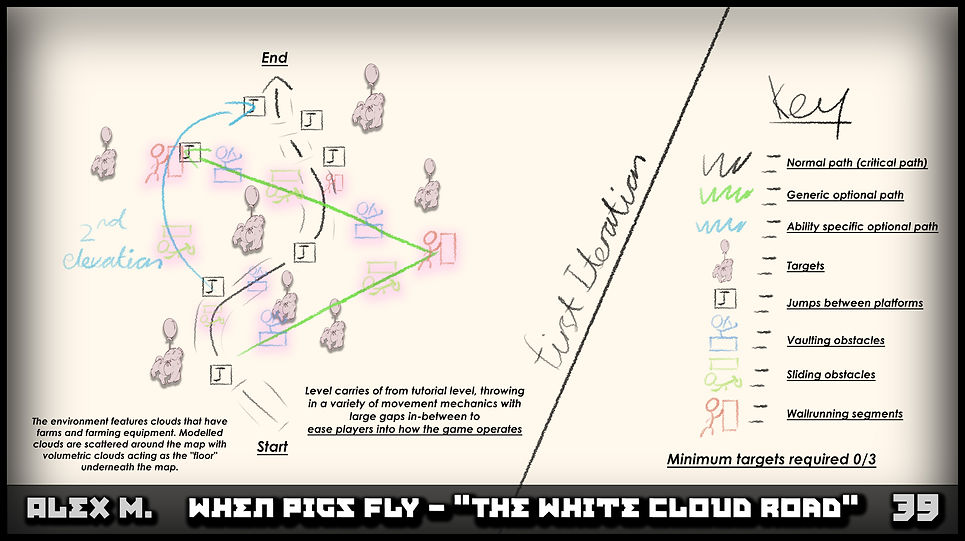
Level 4
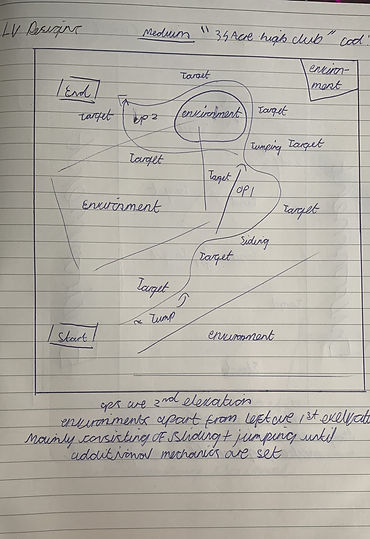
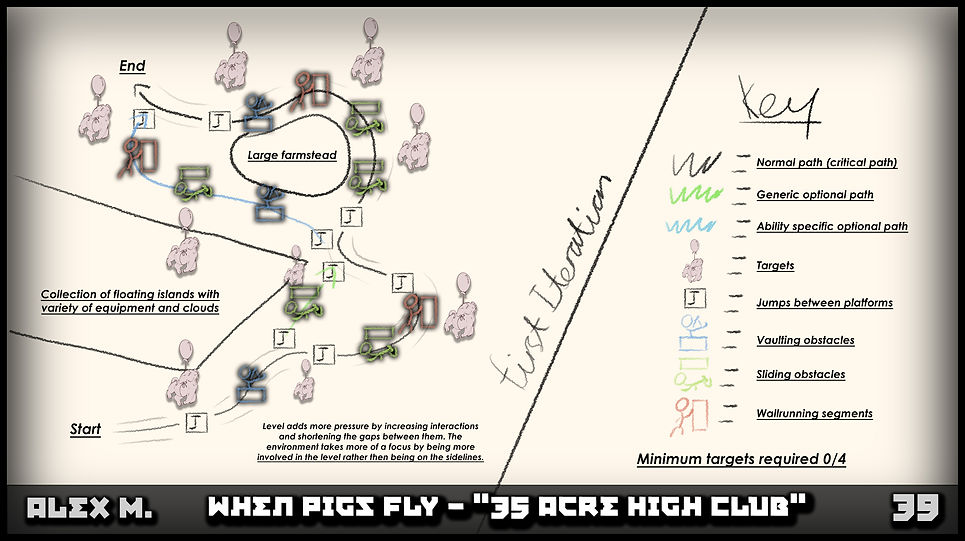
Level 9
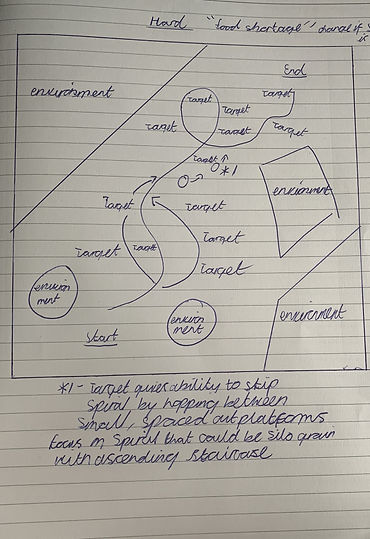
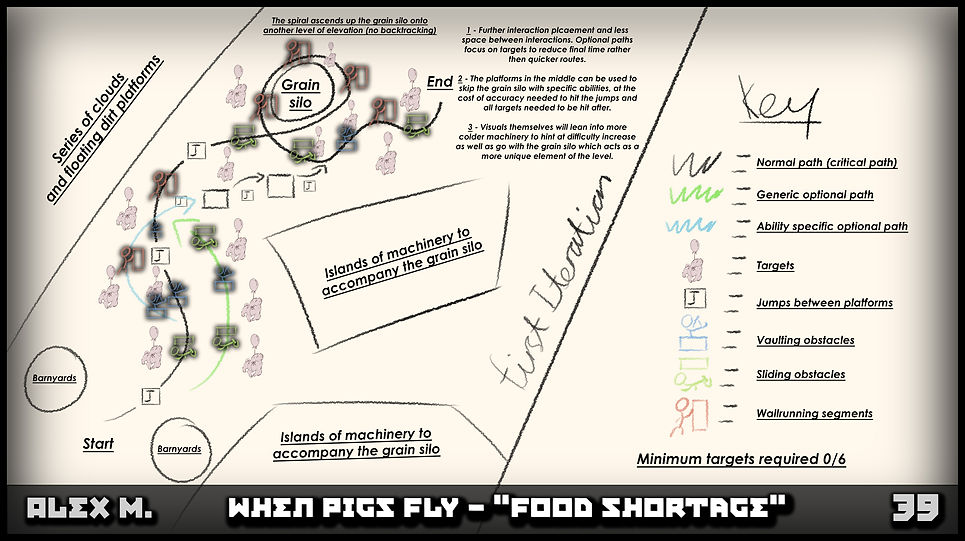
Development
Development went relatively smoothly, especially when compared to Toro. Pre-production set everyone on the right track, apart from art direction where in a couple of instances we had to compromise so both departments were happy. This was due to some visual references not being clear so in the future when tackling direction with teams, I’ll try to be more conversational with art to make sure they fully understand the big picture.
Actual development started with making the character and the gameplay loop in playtest levels whilst designers started off with grey boxing, done with simple cubes and placeholder BP’s. Overtime as blueprints and player mechanics were made and added, testing was done to refine certain elements like vaulting, sliding and player stats. Visuals were also introduced by the tech team and then implemented alongside the tech changes. Later on I took responsibility for adding meshes and pushing through safe branches in source control for others to take advantage of.
This greyboxing stage with some meshes (modular barn kit) and a good chunk of mechanics done was then publicly playtested. The feedback gained from this lead to beneficial changes in the player’s feel and speed, as well as simple bugfixes and boundary blockers throughout the levels so players couldn’t escape onto other islands, or softlock themselves.
Us designers then kept updating the levels with new elements that rolled in such as new props to go along with the barns, or changes to volumes and BP’s throughout the level for better refinement.
Some direct changes that I enforce on all levels were that of lighting and skybox changes. A second directional light was added and setup correctly to give a light boost to indirect shadows due to limitations of DX11 and its static lighting which made the game more accessible and readable. A cyan tinted fog was also added underneath the levels to separate the generic “unreal” look and make the project something more unique whilst hitting the nail with the up in the clouds feel. This was refined in my levels and then placed in levels, with me fixing bugs and tweaking junior levels for better quality, such as lighting affordance in darker areas and changes to visual scales.
Overall, seeing the initial grey boxing to the final stages is a more drastic change similar to that of Waste Removal, Moreso impressive considering the 6 weeks for 3 levels and managing a whole team on the side. Changes to lighting and environmental factors also helped to carry the theme of the game with the meshes being well optimised by both the art team and knowledge of maintaining lower draw calls
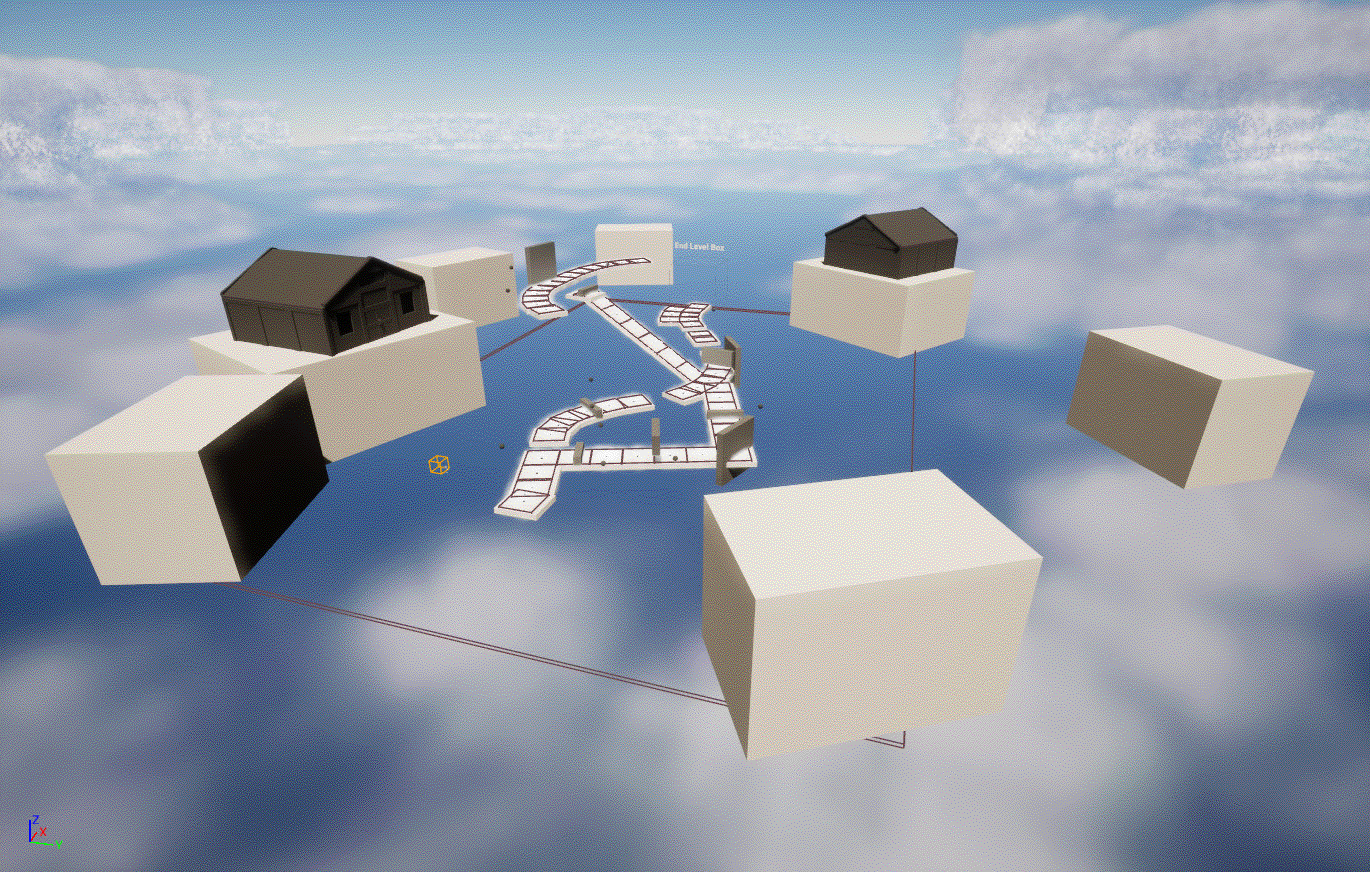
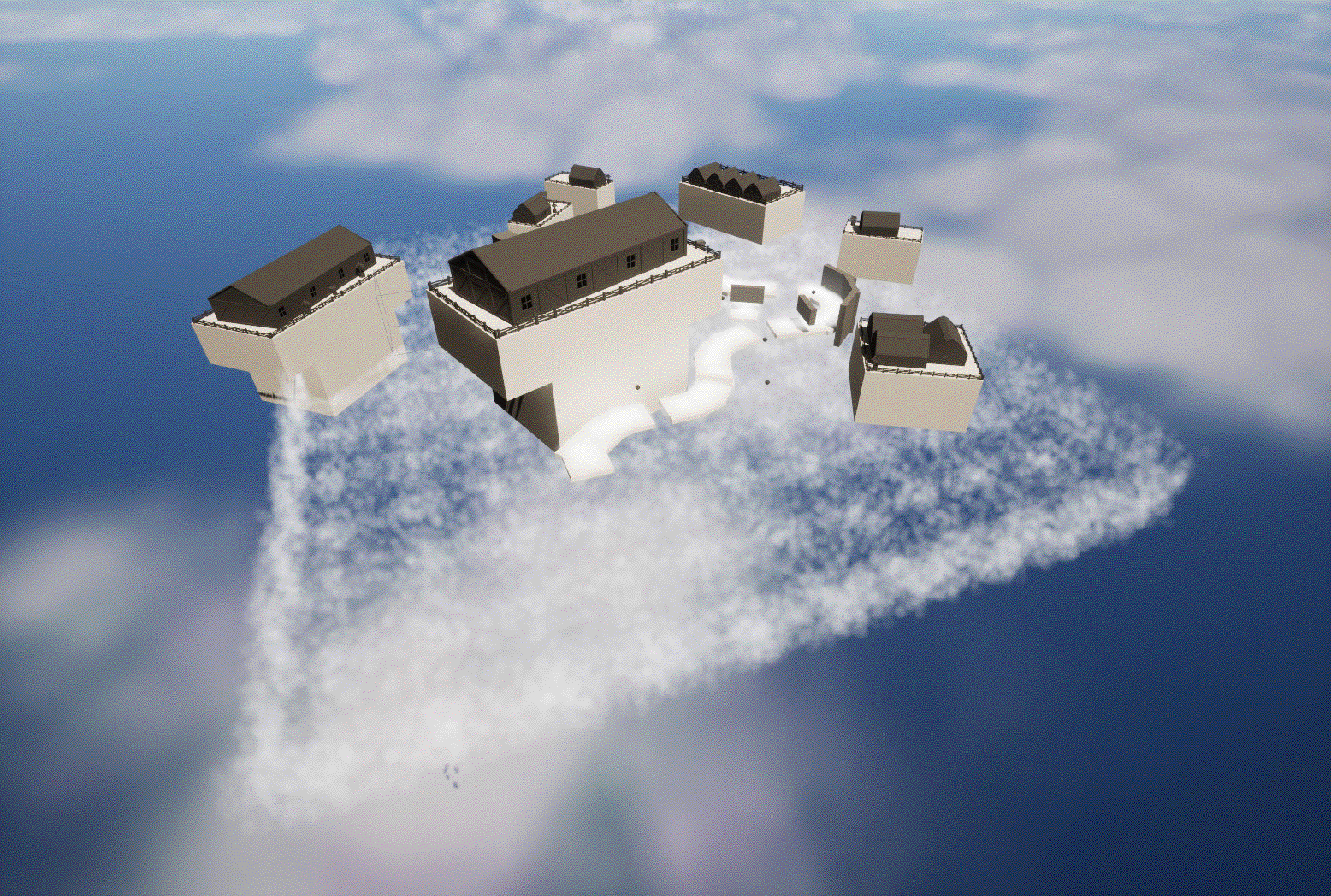
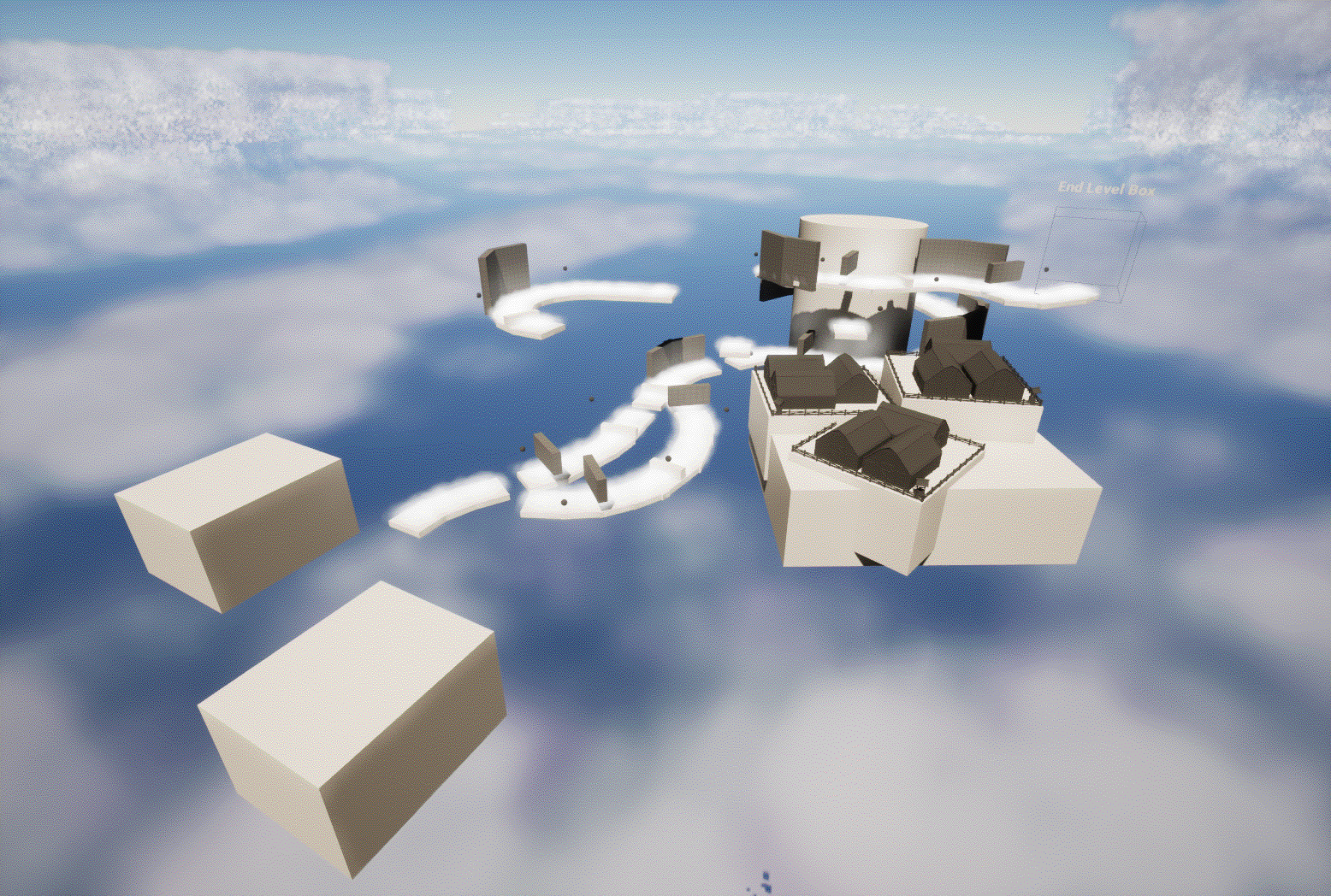
Final Renders
Final renders were also taken of the completed level and presented in a style similar to that of THE FINALS by embark studios, who use a nice simplistic detail bar throughout their promotional materials with the added addition of the team name and game logo.
Level 1













Level 4













Level 9













UI Work
As is tradition of being the “UI guy” throughout all my past team projects, once again I went back to it. I started with making the sketches and mockups of each game screen using notepads and whimsical. Each screen also had notes for how this should operate with extra elements/additions that the visuals will cover. This was given to tech to implement the functionality with me later on making the bulk of the visuals.
After all my 3 levels were done, whilst waiting for new visuals I got to work on the ui. the taskbar icon and editor splash screen were exceptions, done earlier in production and added to the project to give the team better morale as it would look like we had a an actual game on hand rather than rough prototypes with the default splash screen.
The majority of the screens were created in photoshop, using layer options and masks for a non-destructive workflow. This were then added in by me in Unreal’s UI widgets with correct anchoring for widescreen support alongside visual changes when hovering.
One addition that got scrapped was animations for fading and hovering over active elements, but this was scrapped due to a unknown change that unreal made between versions, were now all of the data for the animation was stored in itself, rather than also requiring the elements changed, which threw me for a loo until the very end of project.
Mockups

Taskbar Icon
Editor splash screen
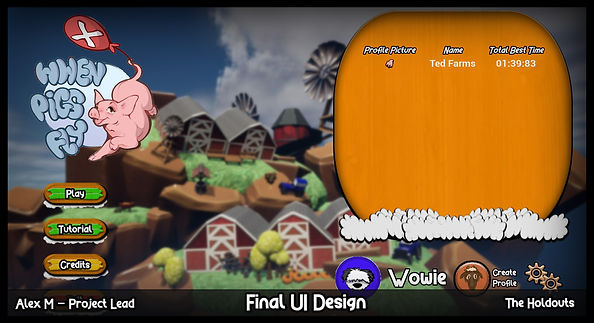
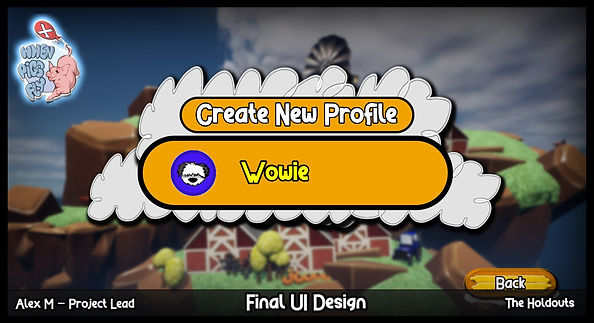

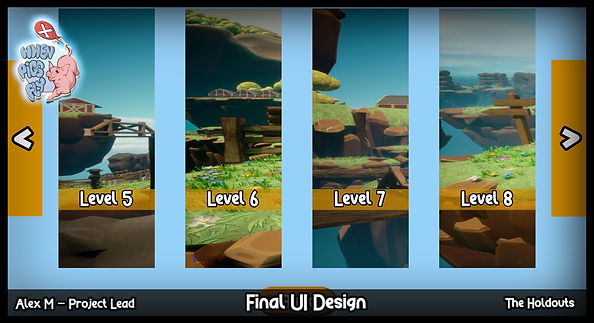


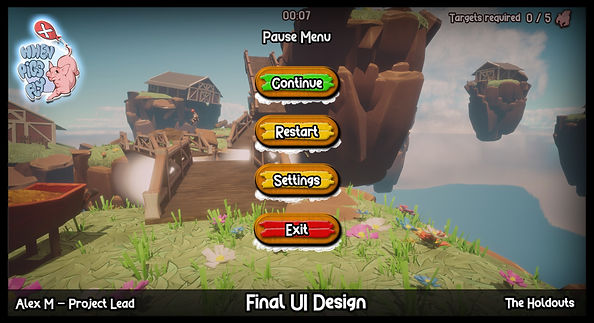

Miscellaneous Work
This was touched on in development but other miscellaneous work I did alongside level design and UI, was importing static meshes and setting up materials with textures, using a combination of PNG and TAG formats.




Other minor work was getting assets and references for other departments like animation, as well as stat tweaking within structs and data tables for better feel when jumping and sliding. Unofficial QA was also done in separate branches which helped clear up a few last minute issues before release.
Itch Pages
I was also in charge with creating the itch page, with a mid-development variation and the final 1.0 release. I created backgrounds, embed thumbnails, banners, screenshots and descriptions for the mid way variation and final release, with the final page using a background provided by concept, but edited by me to fit dimension requirements for itch.
Placeholder Page
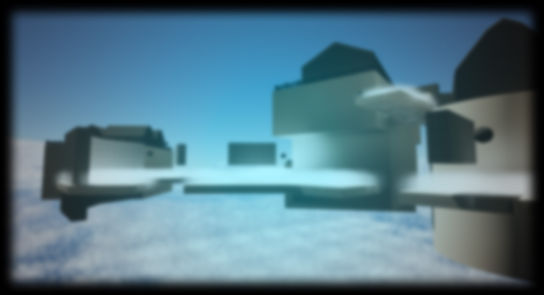

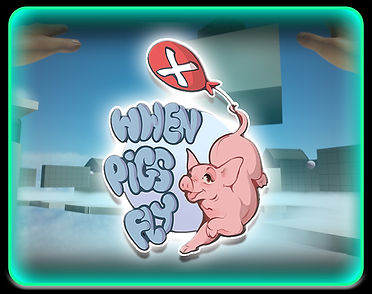






Final Page
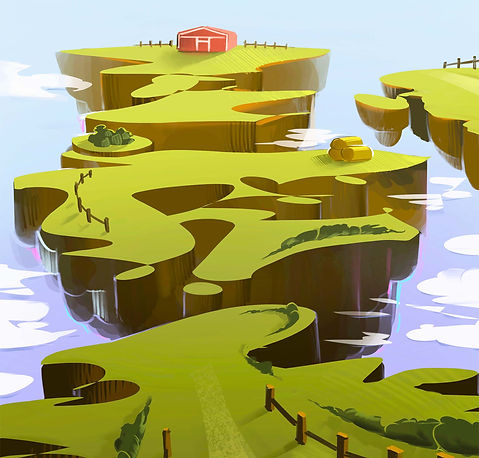
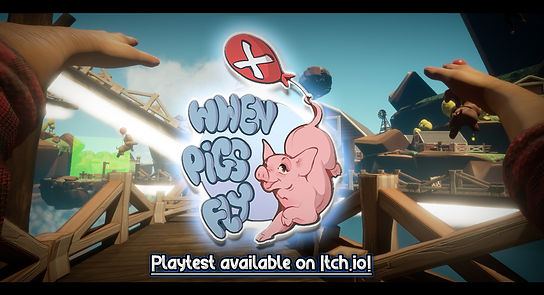
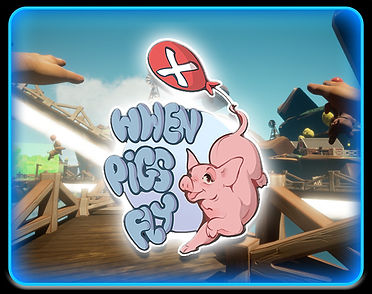






Jira and Teams Usage
Jira was also used to manage workflows and tasks between departments, with each sprint used to categorise departments for simplicity and organisation, as sprints were done unofficially through a meeting at the start of the week which turned out to be quite a good approach.
I mainly handled the design tasks, but rarely would post a tech task such as UI implementation. Each task had a good set of instructions to help juniors along alongside reports of progress and evidence
Teams was also used for comms throughout the teams, such as asking tech for whose working on blueprints for source control, design getting updates on levels and notifying about tech changes, or art posting progress or feedback. Some DM’s were used to sort out issues and get clarification on game elements between seniors.
Overall the project went a lot smoother then Toro and my role as project lead went extremely well, there were very few issues throughout development despite the circumstances apart from the odd issue between art and design which can be sorted by having better conversations and visual references before production started. Alongside my role as project lead, I was still able to do more then just the majority of levels, including refined UI, promotional materials and helping with source control which helped bring my skillset up a bit more.
Skills Learnt
-
Project lead taught more about self-independance and problem solving within departments
-
Unreal's Foliage tool to quickly add and optimise vegetation
-
Improved level Iteration across my 3 levels and better, more nicer critiques for juniors work which made levels more fun
-
Fixes to get around more unique issues such as secondary skylights for better and optimised indirect lighting
-
Improved Jira management and team skills to avoid overscoping and complacency
Skills Used
-
Unreal 5 and its systems
-
Photoshop
-
Usage of internal documentation
-
Jira
-
Miro
-
Teams
-
Github


